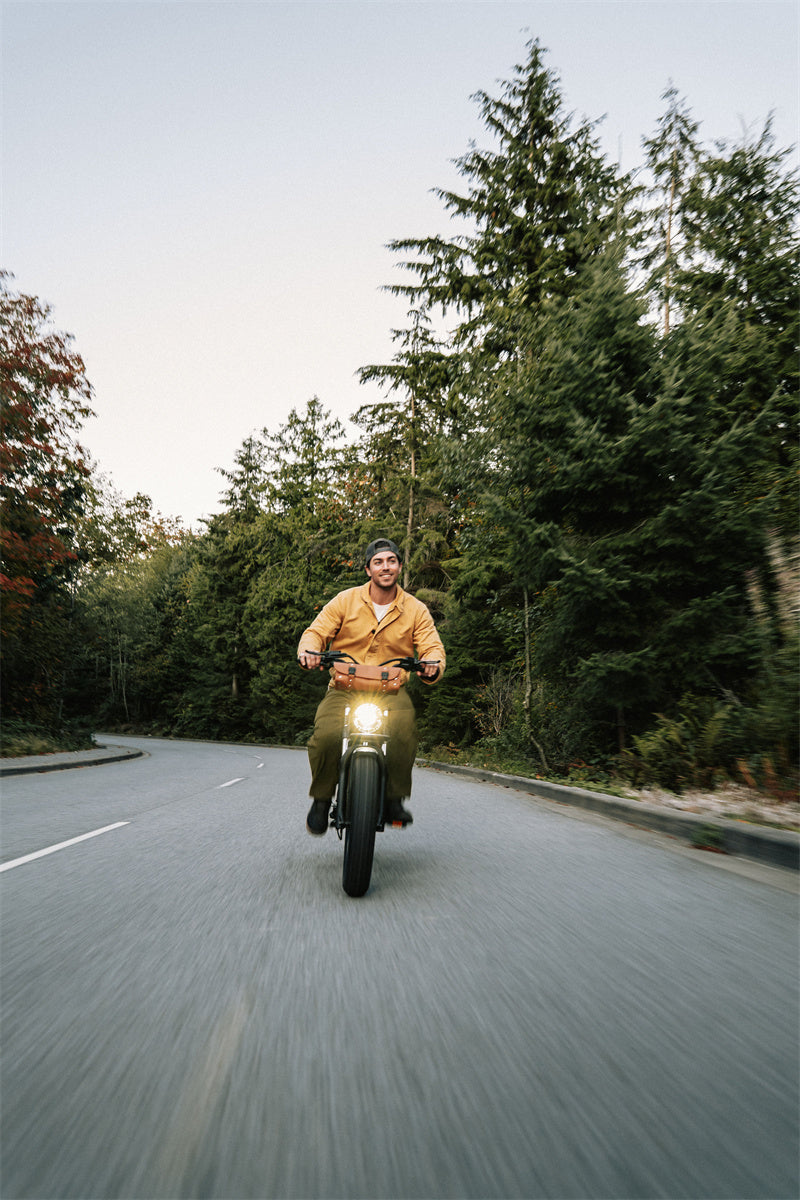
Ebike Beginner Guide | Class 1, Class 2, Class 3 Ebike
But if you're new to ebikes, it can be a little confusing to understand the differences between the different classes of ebikes.
In this guide, we’ll break down the three main types of ebikes: Class 1, Class 2, and Class 3. We’ll also talk about what each class offers and how they perform.
What Are Electric Bikes
An ebike is basically a traditional bicycle with a twist — it’s got a small electric motor and a battery to give you a boost while you pedal.
The motor doesn’t do all the work; you still have to pedal, but it makes the ride way easier, especially when you’re tackling hills or going for longer rides.
The motor gets its power from a battery, usually mounted on the frame.
Electric Bicycle Classifications: Class 1, Class 2, Class 3
Class 1 Ebike
A Class 1 ebike is the most basic type of electric bike. It only uses pedal assist to give you a boost when you pedal.
This means the motor will only activate when you’re pedaling and will stop as soon as you stop.
Class 1 bikes are limited to a maximum speed of 20 mph.
They’re perfect for cruising around on flat roads or getting some assistance on small hills.
If you want a more traditional cycling experience but with a little extra power, Class 1 is the way to go.
Class 2 Ebike
Class 2 bikes are a bit different. They also have pedal-assist, but they also come with a throttle.
This means you can choose to use the throttle to control the bike’s speed without pedaling at all. Like Class 1, the maximum speed for Class 2 ebikes is also 20 mph.
The throttle gives you the option to just cruise without using your legs.
If you’re riding on a flat path and want a break from pedaling, just twist the throttle and let the motor do the work.
They’re still pretty beginner-friendly but offer a little more flexibility than Class 1.
Still searching on Google for the perfect Class 2 electric bike? The RICTOR ebike could be just what you’re looking for.
This pedal assisted electric bike offers the perfect balance of throttle control and pedal assistance, making it easy to adjust your ride depending on the terrain or how much effort you want to put in.
Class 3 Ebike
Class 3 bike are the most powerful option.
They still rely on pedal-assist only, but the motor can help you reach a maximum speed of 28 mph, which is faster than Class 1 and Class 2 bikes.
Class 3 ebikes are designed for people who need extra speed for commuting or long-distance rides.
These bikes tend to be more powerful, and they usually come with features like a larger motor and stronger battery.
They’re great for getting around quickly, especially in areas where speed is important, like during commutes.
SEE ALSO What is a Class 3 Electric Bike and How Does It Differ?
Differences in Performance Across the Classes
Speed: Class 1 and Class 2 bikes are limited to 20 mph, which is perfect for casual rides.
But if you want to go faster, Class 3 can take you up to 28 mph.
Power: Class 3 bikes generally have a stronger motor and bigger battery, which gives them more power to reach higher speeds. Class 1 and Class 2 bikes are more suited for relaxed rides or shorter distances.
Terrain: All classes can handle flat roads, but when it comes to hills, Class 3 bikes have the upper hand because of their power and speed.
Class 1 and Class 2 bikes are better for smaller inclines or less challenging terrains.
Legal Considerations for Each Ebike Class
It’s important to know that there are different laws depending on where you live. In general, Class 1 and Class 2 ebikes are allowed on most bike paths and roads.
Class 3 bikes, however, are often restricted to roads and may not be allowed on bike paths in certain areas, mainly due to their higher speed.
Some regions also have age and helmet requirements for Class 3 bikes.
For example, riders may need to be 16 or older to ride a Class 3 ebike and must wear a helmet. Always check local regulations to make sure you’re following the rules.
Don' t forget to check local law!
Conclusion
Class 1 bikes are great for beginners or people who want to experience biking with a little extra help.
Class 2 bikes give you more flexibility with the throttle, which is useful for those who want less effort in their ride.
Class 3 bikes are perfect for experienced riders who need speed and power for longer commutes or faster rides.
If you’re looking for a Class 2 ebike that strikes the right balance between comfort and control, the RICTOR Class 2 ebike is a great choice.
With its easy throttle control, powerful motor, and smooth ride, it’s designed to make your trips effortless and fun — whether you’re cruising around the city or hitting the trails.
FAQs
Can I use the throttle on a Class 3 ebike?
No, Class 3 ebikes are pedal-assist only. They do not have throttle control and are designed to reach speeds up to 28 mph when you pedal.
Can a Class 3 ebike go faster than a Class 2?
Yes, Class 3 ebikes can reach speeds of up to 28 mph, which is faster than the 20 mph maximum of Class 1 and Class 2 bikes. However, they only provide pedal-assist, not throttle control.
What are the legal restrictions for Class 3 ebikes?
Class 3 ebikes often have stricter regulations. They may be restricted to roads and may not be allowed on bike paths in some areas due to their higher speed. In some regions, you must be 16 or older to ride a Class 3 bike and wear a helmet.




